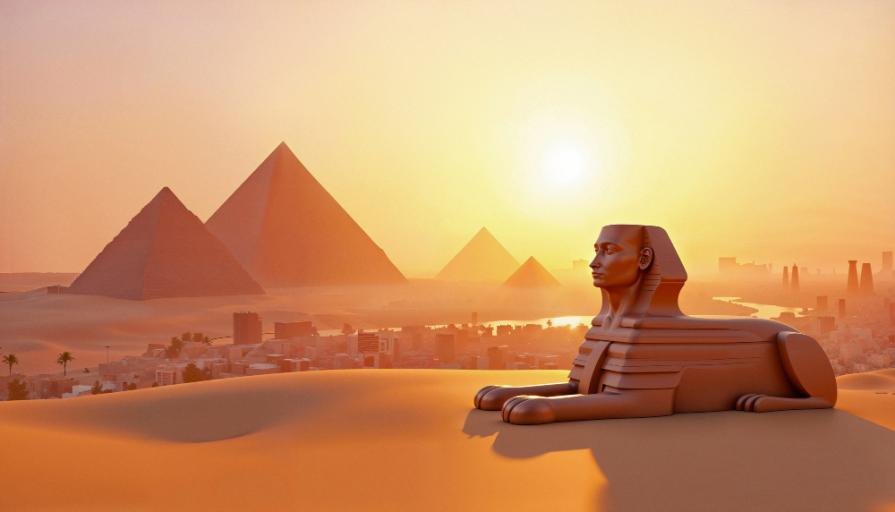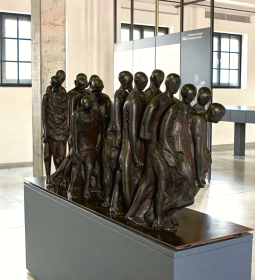A silent guard, the father of horror or even a monster - the Great Sphinx has been guarding the peace of the pharaohs and the place of their last resting place, the Egyptian pyramids in the city of Giza for thousands of years. The origin of the monument is shrouded in secrets and excites the minds of ordinary people and researchers.
Everything is mysterious, from the date of birth to the image of the monument: a cat or a lion, whose face is depicted, where and when the nose disappeared, what is wrong with the tail.
The Great Sphinx is the oldest surviving man-made monument on Earth along with the Egyptian pyramids, which serve as tombs for the pharaohs. This is the main attraction of Egypt, which tourists from all over the world seek to see with their own eyes. The complex of ancient buildings is located on the outskirts of Cairo in Giza, and not in the middle of the endless desert, as many people are mistaken. Around the pyramids grew a metropolis, whose inhabitants observe the famous pyramids, passing by on the way to work or sitting at a table in a cafe. "What about the numerous photos where there is sand around the pyramids?" you ask. Solves the angle and skill of the photographer!
Today, the city of Giza is almost fused with Cairo, and began history as the northern cemetery of the ancient Egyptian city of Memphis, where the pharaohs of the first three dynasties are buried. Giza received fame after the construction of a complex of pyramids for the pharaohs of the IV dynasty.

The exact age of the pyramids is not established: scientists have approximate figures, according to which the oldest pyramid of Cheops was built 4500 years ago. The Great Sphinx is 2,000 years younger and appeared simultaneously with the pyramid of Hefre. This is evidenced by the fact that the stone blocks of the pyramid and the Sphinx have the same size and age. Hence the myth of the alleged portrait similarity of the Great Sphinx with Pharaoh Hephren. In fact, the face of the Sphinx has the features of a representative of the Negroid race, from which it follows that this is definitely not a pharaoh.
"Are you pleased to lose your nose?"
It is all the more difficult to catch the similarity - the Sphinx has no nose, and without it, as Gogol wrote: "A person - the devil knows that: a bird is not a bird, a citizen is not a citizen." There are many theories of loss, as they say, choose any:
- Allegedly, the nose was torn off by a shell fired from the cannon of the Napoleonic army during the Egyptian campaigns of the emperor.
- Perhaps the Muslim fanatic disfigured the face by depriving him of his nose as a punishment to the townspeople who offer gifts to the idol, which is forbidden by Allah.
- One-and-a-half-meter nose elementary suffered from time and desert winds.
The truth is known, perhaps, only by the Sphinx itself, the rest are left to guess and guess.
"Restyling" of the Great Sphinx
There is a theory that the face of a person in the Sphinx did not appear immediately - initially an ordinary lion with an ordinary lion's face lay on the sand. For the Egyptians, the lion is a symbol of the sun and the power of the pharaoh at the same time, the guardian of the eternal rest of the great rulers. And the face of a man on a lion's body appeared at the behest of Hefre, who wished in this way to perpetuate the memory of himself. Perhaps this explains why the head is disproportionately smaller than the body of the animal. So it turned out not a lion, but a sphinx, as the Greeks called it. In the Egyptian language there is no word for the sphinx,and according to the Greek tradition and the myth of Oedipus, the sphinx is a creature with the body of a lion, eagle wings and the face of a man. In this sense, the esteemed Great Sphinx and not the Sphinx at all!

Hefren has nothing to do with it
Speaking about the age of the Great Sphinx, scientists do not cease to argue. The stone guard could have appeared long before Hefre: this is evidenced by the damage to the lower part of the monument associated with erosion, when the stone is in the water for a long time. But where in the desert do the rains come from? According to scientists, there was no rain in this area for about 8,000 years. So the Sphinx is older than the pyramids? Sheer mysteries!
What if the Sphinx is a remake?
Looking at the old pictures of the Sphinx and comparing them with the new ones, traces of restoration are noticeable. The great sphinx is carved from a monolithic limestone rock and subsequently underwent restorations, the first of which took place under the pharaohs, and the last in 2014. Thousands of years of sphinx and pyramids spent buried in the sands of the desert. Part of the Sphinx was dug up in 1817, and completely only in 1945. Fans of legends believe that the ancient artifacts could not "lie idle" in sand drifts for so long, and that they were not dug up, but built.
Blame the tail
Proponents of homegrown theories that the Sphinx is a remake of the XIX century build speculation, based on the fact that the tail of the monument looks like new in comparison with the body of a lion. Perhaps the tail was "attached" or restored by decree of the same Hefre, and perhaps during subsequent restorations. Quite unthinkable legends say that the "king is not real" - the tail is not a lion, but a cat. That's a sensation!











